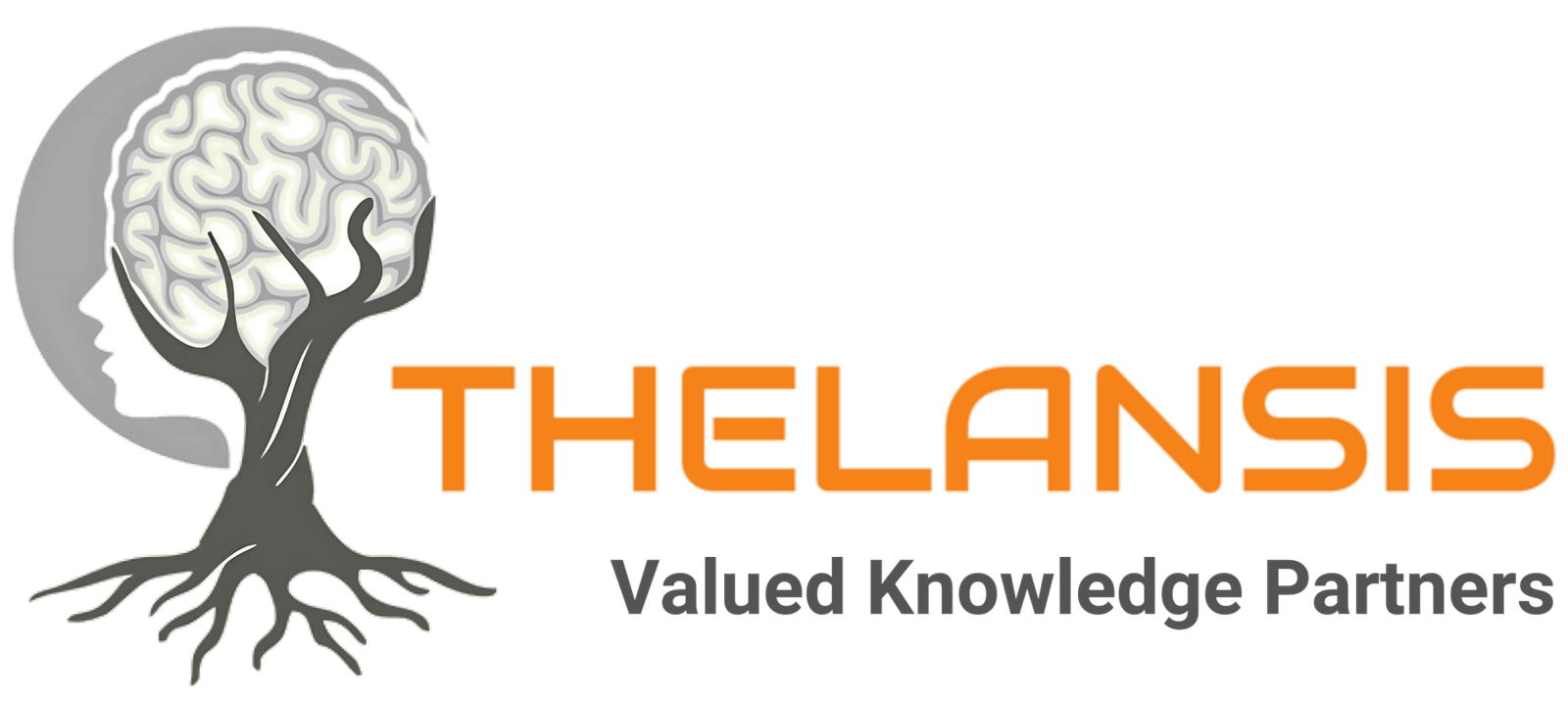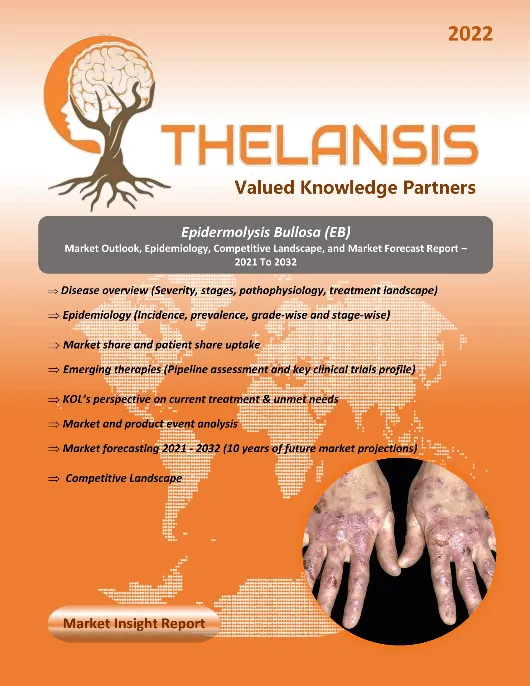Oculopharyngeal Muscular Dystrophy (OPMD) – Market Outlook, Epidemiology, Competitive Landscape, and Market Forecast Report – 2024 To 2034
- Published Date : December 3, 2024
- Updated On : September 24, 2025
- Pages : 155
Oculopharyngeal Muscular Dystrophy (OPMD) Market Outlook
Thelansis’s “Oculopharyngeal Muscular Dystrophy (OPMD) Market Outlook, Epidemiology, Competitive Landscape, and Market Forecast Report – 2024 To 2034” covers disease overview, epidemiology, drug utilization, prescription share analysis, competitive landscape, clinical practice, regulatory landscape, patient share, market uptake, market forecast, and key market insights under the potential Oculopharyngeal Muscular Dystrophy treatment modalities options for eight major markets (USA, Germany, France, Italy, Spain, UK, Japan, and China).
Oculopharyngeal Muscular Dystrophy (OPMD) Overview
Oculopharyngeal Muscular Dystrophy (OPMD) is a rare, late-onset, and typically autosomal dominant genetic neuromuscular disorder characterized by slowly progressive weakness primarily affecting muscles of the eyes (oculo) and throat (pharyngeal), with symptoms usually beginning in the fifth or sixth decade of life. The condition is caused by a short GCN trinucleotide repeat expansion (11-18 repeats instead of the normal 10) in the PABPN1 gene, which codes for the nuclear polyadenylate-binding protein 1; this mutation leads to the formation of an abnormal protein that aggregates into characteristic intranuclear inclusions within muscle cells, ultimately impairing muscle function. The most common presenting symptoms are bilateral drooping eyelids (ptosis) and progressive difficulty swallowing (dysphagia), which can increase the risk of aspiration pneumonia and malnutrition, and later, the disease may involve proximal limb-girdle weakness, sometimes requiring mobility aids. While there is no cure, the diagnosis is confirmed by genetic testing, and management focuses on improving quality of life through surgical correction of ptosis, cricopharyngeal myotomy or dilation for severe dysphagia, and supportive physical and speech therapy.
Geography coverage:
G8 (United States, EU5 [France, Germany, Italy, Spain, U.K.], Japan, and China)
Insights driven by robust research, including:
- In-depth interviews with leading KOLs and payers
- Physician surveys
- RWE analysis for claims and EHR datasets
- Secondary research (e.g., peer-reviewed journal articles, third-party research databases)
Deliverables format and updates*:
- Detailed Report (PDF)
- Market Forecast Model (MS Excel-based automated dashboard)
- Epidemiology (MS Excel; interactive tool)
- Executive Insights (PowerPoint presentation)
- Others: regular updates, customizations, consultant support
*As per Thelansis’s policy, we ensure that we include all the recent updates before releasing the report content and market model.
Salient features of Market Forecast model:
- 10-year market forecast (2024–2034)
- Bottom-up patient-based market forecasts validated through the top-down sales methodology
- Covers clinically and commercially-relevant patient populations/ line of therapies
- Annualized drug-level sales and patient share projections
- Utilizes our proprietary Epilansis and Analog tool (e.g., drug uptake and erosion) datasets and conjoint analysis approach
- Detailed methodology/sources & assumptions
- Graphical and tabular outputs
- Users can customize the model based on requirements
Key business questions answered:
- How can drug development and lifecycle management strategies be optimized across G8 markets (US, EU5, Japan, and China)?
- How large is the patient population in terms of incidence, prevalence, segments, and those receiving drug treatments?
- What is the 10-year market outlook for sales and patient share?
- Which events will have the greatest impact on the market’s trajectory?
- What insights do interviewed experts provide on current and emerging treatments?
- Which pipeline products show the most promise, and what is their potential for launch and future positioning?
- What are the key unmet needs and KOL expectations for target profiles?
- What key regulatory and payer requirements must be met to secure drug approval and favorable market access?
- and more…
Oculopharyngeal Muscular Dystrophy (OPMD) Market Outlook
Thelansis’s “Oculopharyngeal Muscular Dystrophy (OPMD) Market Outlook, Epidemiology, Competitive Landscape, and Market Forecast Report – 2024 To 2034” covers disease overview, epidemiology, drug utilization, prescription share analysis, competitive landscape, clinical practice, regulatory landscape, patient share, market uptake, market forecast, and key market insights under the potential Oculopharyngeal Muscular Dystrophy treatment modalities options for eight major markets (USA, Germany, France, Italy, Spain, UK, Japan, and China).
Oculopharyngeal Muscular Dystrophy (OPMD) Overview
Oculopharyngeal Muscular Dystrophy (OPMD) is a rare, late-onset, and typically autosomal dominant genetic neuromuscular disorder characterized by slowly progressive weakness primarily affecting muscles of the eyes (oculo) and throat (pharyngeal), with symptoms usually beginning in the fifth or sixth decade of life. The condition is caused by a short GCN trinucleotide repeat expansion (11-18 repeats instead of the normal 10) in the PABPN1 gene, which codes for the nuclear polyadenylate-binding protein 1; this mutation leads to the formation of an abnormal protein that aggregates into characteristic intranuclear inclusions within muscle cells, ultimately impairing muscle function. The most common presenting symptoms are bilateral drooping eyelids (ptosis) and progressive difficulty swallowing (dysphagia), which can increase the risk of aspiration pneumonia and malnutrition, and later, the disease may involve proximal limb-girdle weakness, sometimes requiring mobility aids. While there is no cure, the diagnosis is confirmed by genetic testing, and management focuses on improving quality of life through surgical correction of ptosis, cricopharyngeal myotomy or dilation for severe dysphagia, and supportive physical and speech therapy.
Geography coverage:
G8 (United States, EU5 [France, Germany, Italy, Spain, U.K.], Japan, and China)
Insights driven by robust research, including:
- In-depth interviews with leading KOLs and payers
- Physician surveys
- RWE analysis for claims and EHR datasets
- Secondary research (e.g., peer-reviewed journal articles, third-party research databases)
Deliverables format and updates*:
- Detailed Report (PDF)
- Market Forecast Model (MS Excel-based automated dashboard)
- Epidemiology (MS Excel; interactive tool)
- Executive Insights (PowerPoint presentation)
- Others: regular updates, customizations, consultant support
*As per Thelansis’s policy, we ensure that we include all the recent updates before releasing the report content and market model.
Salient features of Market Forecast model:
- 10-year market forecast (2024–2034)
- Bottom-up patient-based market forecasts validated through the top-down sales methodology
- Covers clinically and commercially-relevant patient populations/ line of therapies
- Annualized drug-level sales and patient share projections
- Utilizes our proprietary Epilansis and Analog tool (e.g., drug uptake and erosion) datasets and conjoint analysis approach
- Detailed methodology/sources & assumptions
- Graphical and tabular outputs
- Users can customize the model based on requirements
Key business questions answered:
- How can drug development and lifecycle management strategies be optimized across G8 markets (US, EU5, Japan, and China)?
- How large is the patient population in terms of incidence, prevalence, segments, and those receiving drug treatments?
- What is the 10-year market outlook for sales and patient share?
- Which events will have the greatest impact on the market’s trajectory?
- What insights do interviewed experts provide on current and emerging treatments?
- Which pipeline products show the most promise, and what is their potential for launch and future positioning?
- What are the key unmet needs and KOL expectations for target profiles?
- What key regulatory and payer requirements must be met to secure drug approval and favorable market access?
- and more…
1. Key Findings and Analyst Commentary
- Key trends: market snapshots, SWOT analysis, commercial benefits and risk, etc..
2. Disease Context
- Disease definition, classification, etiology and pathophysiology, drug targets,etc.
3. Epidemiology
- Key takeaways
- Incidence / Prevalence
- Diagnosed and Drug-Treated populations
- Comorbidities
- Other relevant patient segments
4. Market Size and Forecast
- Key takeaways
- Market drivers and constraints
- Drug-class specific trends
- Country-specific trends
5. Competitive Landscape
- Current therapies
- Key takeaways
- Dx and Tx journey/algorithm
- Key current therapies – profiles and KOL insights
- Emerging therapies
- Key takeaways
- Notable late-phase emerging therapies – profiles, launch expectations, KOL insights
- Notable early-phase pipeline
6. Unmet Need and TPP Analysis
- Top unmet needs and future attainment by emerging therapies
- TPP analysis and KOL expectations
7. Regulatory and Reimbursement Environments (by country and payer insights)
8. Appendix (e.g., bibliography, methodology)
Table of contents (TOC)
1. Key Findings and Analyst Commentary
- Key trends: market snapshots, SWOT analysis, commercial benefits and risk, etc..
2. Disease Context
- Disease definition, classification, etiology and pathophysiology, drug targets,etc.
3. Epidemiology
- Key takeaways
- Incidence / Prevalence
- Diagnosed and Drug-Treated populations
- Comorbidities
- Other relevant patient segments
4. Market Size and Forecast
- Key takeaways
- Market drivers and constraints
- Drug-class specific trends
- Country-specific trends
5. Competitive Landscape
- Current therapies
- Key takeaways
- Dx and Tx journey/algorithm
- Key current therapies – profiles and KOL insights
- Emerging therapies
- Key takeaways
- Notable late-phase emerging therapies – profiles, launch expectations, KOL insights
- Notable early-phase pipeline
6. Unmet Need and TPP Analysis
- Top unmet needs and future attainment by emerging therapies
- TPP analysis and KOL expectations
7. Regulatory and Reimbursement Environments (by country and payer insights)
8. Appendix (e.g., bibliography, methodology)


